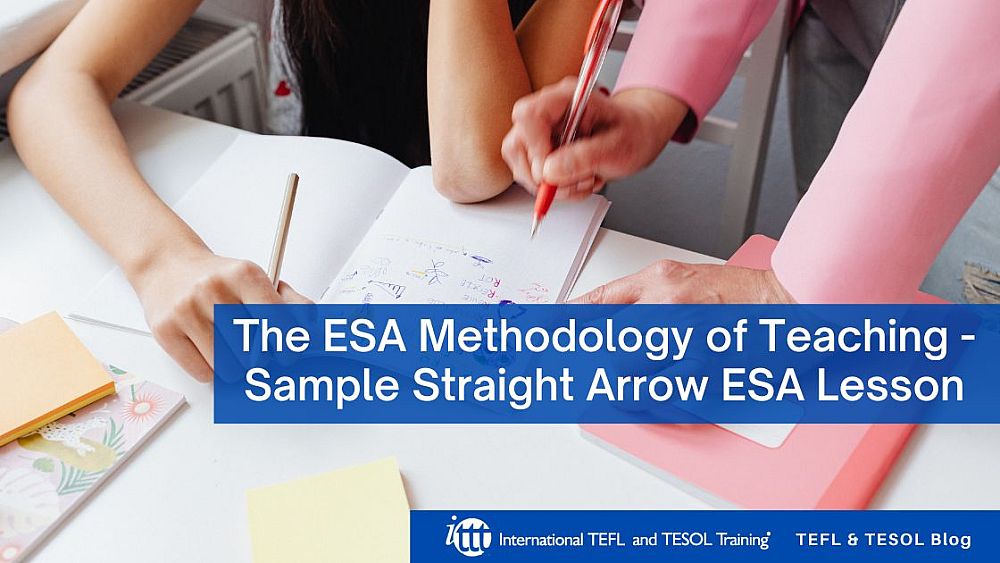The ESA Methodology of Teaching - Sample Straight Arrow ESA Lesson

In this blog post, we will look at an actual example of an ESA straight arrow lesson plan. We will include examples of the activities used and their purpose. You can adapt this plan to a variety of other uses and levels.
Table of Contents
Watch the video about this topic
Are you ready to teach English as a foreign language?
Check out what our course grads say in our many video testimonials!
Watch the video about this topic
Straight arrow ESA Lesson PlanClass level: Elementary
Number of students: 8
Lesson aim: After the lesson the students should be able to look at an animal and make sentences to say what it "can and can't" do.
Sample sentences when looking at the picture of an elephant. It can walk. It can't fly.
Engage phase
Show the students a video of animals and they are going to say what they like about those animals and try to create a list of some more. Remember what we're trying to do here is to get the students talking and thinking in English. We're using a typical engage activity which is to create a list and we try to make sure that all the students have been involved in some way in creating those lists. Take examples from the students and list them on the board.
Study Phase
Moving on to the study phase, this usually has two parts. The first part is going to be the board work and the teacher is going to try to elicit from the students what each of those animals can and can't do. Typically what the students will say is just single words, for example, run, jump, fly and so on. What we would then need to do is to make sure that each of those things is put into a sentence. We will run through each of the animals and get the students to tell us in full sentences what it can and what it can't do. This will be covering the actual grammar point that we're trying to cover.
Next we cover the second part of the study phase which is to make sure that the students understand this particular grammar point. This can be done with the use of worksheets, so for example we may have a gap fill activity and we may have a matching activity on that particular can/can't grammar point. These would usually be completed in students in pairs with one sheet between two, to allow for interaction (discussion) between them.
Activate phase
In the final phase of the lesson which is the activate, we get the students in pairs, to create their own super animal and once they've drawn that particular animal, they're going to write a number of sentences to tell us what it can and can't do. Once all pairs have finished, we will feedback from each group who will show their super anima and describe to us in full sentences what their animal can and can't do.
Are you ready to teach English as a foreign language?
Apply now & get certified to teach english abroad!
Speak with an ITTT advisor today to put together your personal plan for teaching English abroad!
Send us an email or call us toll-free at 1-800-490-0531 to speak with an ITTT advisor today.
Related Articles:
- Top 10 Cities in Europe with the Highest Demand for English Language Teachers
- 5 Reasons To Take A TEFL Course Right Now - Even If You Are Not Leaving Yet | ITTT | TEFL Blog
- All the Documents You Will Need to Teach English Abroad
- The Impact of Positive Motivation on an ESL Classroom
- You're Never Too Old to Change Your Life and Do a TEFL Course | ITTT | TEFL Blog
- Getting Student Placement Right - The Best Desk Arrangements for EFL Students



